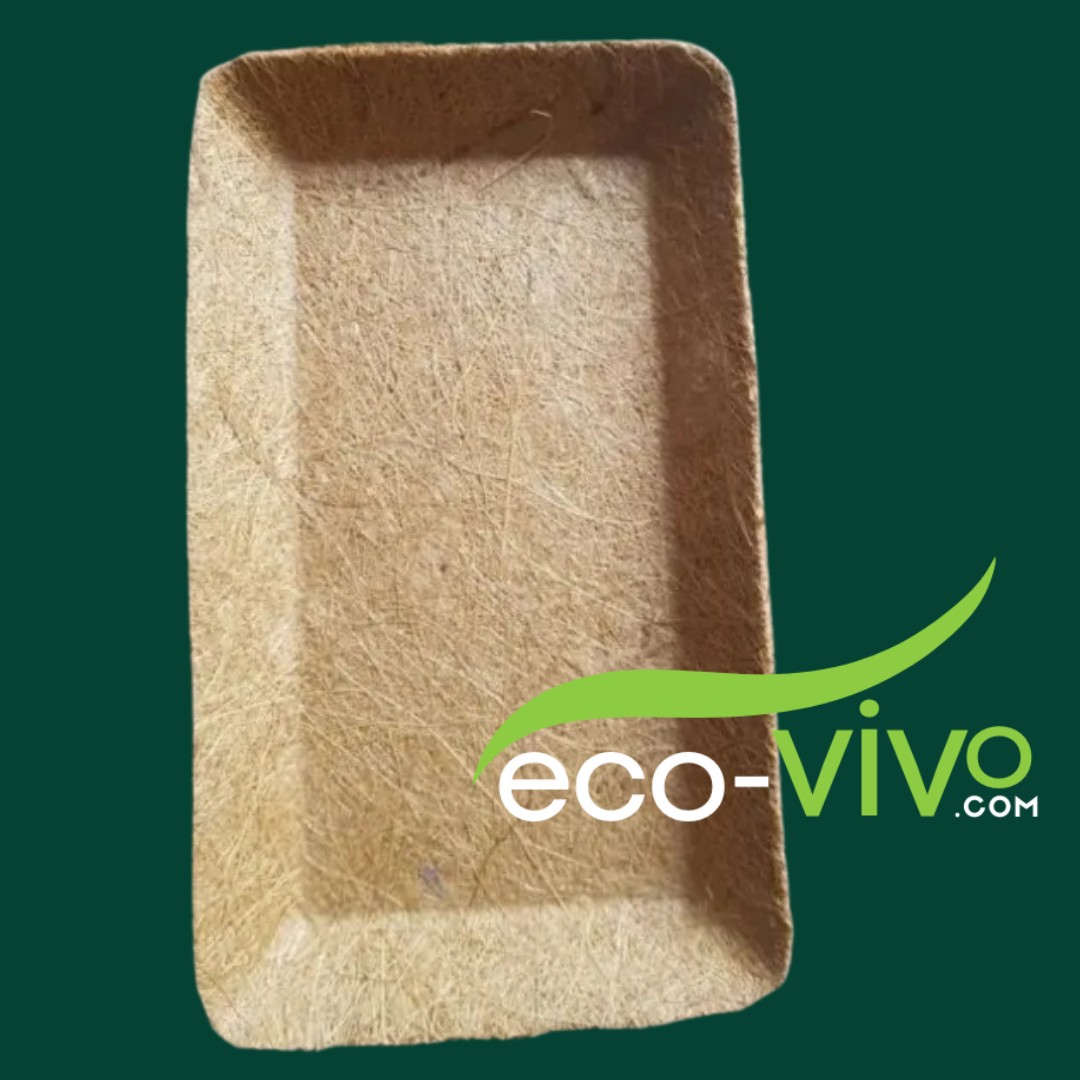A Natural Choice for Food Presentation
In an era marked by increasing environmental consciousness, the quest for sustainable alternatives to traditional tableware has gained significant momentum. Among the myriad of eco-friendly options emerging, coconut fiber plates stand out as a testament to nature’s ingenuity and human resourcefulness. These plates, crafted from the fibrous husk of the coconut, offer a unique blend of aesthetic appeal, functional versatility, and environmental responsibility, making them an ideal choice for presenting fruits, meals, and culinary creations.
From Waste to Wonder: The Genesis of Coconut Fiber Plates
The journey of a coconut fiber plate begins with the humble coconut, a staple in tropical regions worldwide. After the coconut’s flesh and water are extracted, the husk, often considered waste, remains. This fibrous husk, once discarded, is now transformed into a valuable resource. Skilled artisans meticulously process the husk, cleaning, drying, and compressing the fibers to create a sturdy and versatile material. This process is inherently sustainable, repurposing agricultural byproducts and reducing waste.
The Natural Aesthetics: A Rustic Charm for Modern Tables
Coconut fiber plates possess a distinct natural aesthetic that adds a touch of rustic charm to any dining experience. Their earthy tones, textured surfaces, and organic shapes create a visual appeal that complements both casual and formal settings. The natural variations in color and texture make each plate unique, adding a sense of individuality to the table. Whether used for presenting vibrant fruits, colorful salads, or hearty meals, coconut fiber plates elevate the dining experience with their understated elegance.
Functionality and Versatility: Beyond Aesthetics
Beyond their visual appeal, coconut fiber plates offer a range of functional benefits. Their sturdy construction ensures durability, making them suitable for everyday use. The natural fibers provide insulation, helping to maintain the temperature of food. They are also lightweight and easy to handle, making them ideal for picnics, outdoor gatherings, and casual dining.
- Fruit Presentation: The natural texture and earthy tones of coconut fiber plates provide a beautiful backdrop for showcasing the vibrant colors and textures of fruits. The plates can be used to create visually appealing fruit platters, adding a touch of rustic elegance to any occasion.
- Meal Service: Coconut fiber plates are suitable for serving a variety of meals, from salads and appetizers to main courses and desserts. Their sturdy construction and insulating properties make them ideal for both hot and cold dishes.
- Decorative Displays: Beyond food presentation, coconut fiber plates can be used as decorative displays for showcasing natural elements like flowers, stones, or shells, adding a touch of organic beauty to home decor.
- Sustainable Events: For environmentally conscious events, coconut fiber plates offer a sustainable alternative to disposable plastic or paper plates, reducing waste and minimizing environmental impact.
Environmental Responsibility: A Sustainable Choice for the Planet
The environmental benefits of coconut fiber plates are significant. They are:
- Biodegradable and Compostable: Made from natural fibers, coconut fiber plates decompose naturally, returning to the earth without leaving harmful residues.
- Renewable Resource: Coconut trees are abundant in tropical regions, providing a sustainable source of raw material.
- Reduced Waste: Utilizing coconut husks reduces agricultural waste and minimizes the need for virgin materials.
- Eco-Friendly Production: The production process of coconut fiber plates typically involves minimal processing and energy consumption, further reducing their environmental footprint.
- Supporting Local Communities: The production of coconut fiber plates often supports local artisans and communities in coconut-producing regions, promoting sustainable livelihoods.
Craftsmanship and Cultural Significance: A Heritage Preserved
The creation of coconut fiber plates is often intertwined with traditional craftsmanship and cultural heritage. In many coconut-producing regions, artisans have honed their skills over generations, passing down the knowledge and techniques of transforming coconut husks into functional and beautiful objects. By supporting these artisans, we contribute to the preservation of cultural traditions and the promotion of sustainable livelihoods.
The Growing Demand: A Shift Towards Sustainable Living
As consumers become increasingly aware of the environmental impact of their choices, the demand for sustainable alternatives like coconut fiber plates is growing. Restaurants, cafes, and event organizers are embracing these eco-friendly options, recognizing their aesthetic appeal and environmental benefits. Homeowners are also incorporating coconut fiber plates into their kitchens and dining tables, seeking to create a more sustainable and natural living environment.
Challenges and Opportunities: The Future of Coconut Fiber Plates
Despite their growing popularity, coconut fiber plates face certain challenges. Ensuring consistent quality, scaling up production, and developing efficient distribution channels are crucial for the widespread adoption of these sustainable products. However, these challenges also present opportunities for innovation and growth. Research and development efforts can focus on improving production techniques, enhancing durability, and expanding the range of designs and applications.
Embracing the Natural Choice: A Call for Sustainable Consumption
Coconut fiber plates represent a tangible example of how sustainable practices can be integrated into our daily lives. By choosing these eco-friendly alternatives, we can reduce our environmental footprint, support local communities, and embrace a more natural and mindful approach to consumption. The next time you present fruits, meals, or culinary creations, consider the sustainable elegance of coconut fiber plates, a testament to nature’s bounty and human ingenuity. They are more than just plates; they are a symbol of our commitment to a healthier planet and a more sustainable future.






